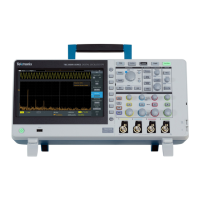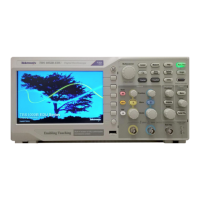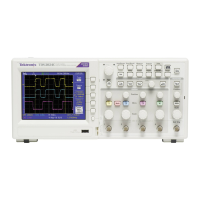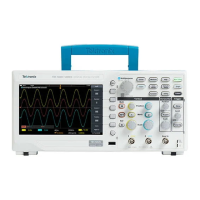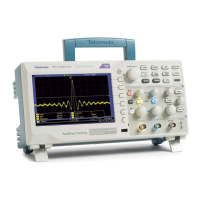Arguments
AC sets the specified instrument channel to AC coupling.
DC sets the specified instrument channel to DC coupling.
GND sets the specified instrument channel to ground. Only a flat ground-level
waveform is displayed.
Examples
CH1:COUPLING AC establishes AC coupling on channel 1.
CH2:COUPLING? might return :CH2:COUPling DC indicating that channel 2 is
set to DC coupling.
CH<x>:DESKew
Sets or queries the deskew time for channel <x>, where x is the channel number.
You can adjust the deskew time to add an independent, channel-based delay time
to the delay (set by the horizontal position control and common to all channels)
from the common trigger point to first sample taken for each channel. This lets
you compensate individual channels for different delays introduced by their
individual input hook ups.
Group
Vertical
Syntax
CH<x>:DESKew <NR3>
CH<x>:DESKew?
Arguments
<NR3> is the deskew time for channel <x>, ranging from -100 ns to +100 ns
with a resolution of 1 ns.
Examples
CH4:DESKew 5.0E-9 sets the deskew time for channel 4 to 5 ns.
CH2:DESKew? might return :CH2:DESKEW 2.0000E-09 indicating that the
deskew time for channel 2 is set to 2 ns.
C commands
62 TBS2000 Series Programmer
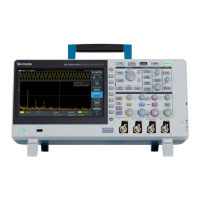
